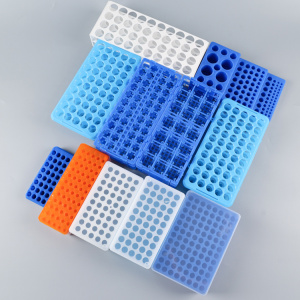Teach you to identify high-quality centrifuge tubes at a glance
There are thousands of consumables in modern laboratories, and the most familiar and most frequently used consumables may be those tube consumables, such as centrifuge tubes! Centrifuge tubes, as the name suggests, are mainly used with centrifuges, and are unavoidable consumables in all liquid-phase extraction experiments! Therefore, it is very important to be able to discern which centrifuge tubes are high-quality and which are inferior, because these are the consumables we use every day.
Well, let`s get down to business, here we summarize the years of experience of Yongyue Medical and share it with you here! First of all, the classification of centrifuge tubes can be broadly distinguished according to their material properties, so that centrifuge tubes can be divided into two categories: glass centrifuge tubes and plastic centrifuge tubes. Among them, the centrifuge tubes made of plastic can be subdivided into PP, PC, PS, etc. According to different needs, the manufacturer will choose different plastic materials for production.

There are plastic and glass centrifuge tubes commonly used in laboratories. Generally, plastic is used more, because glass centrifuge tubes cannot be used in high-speed or ultracentrifuges. Plastic Centrifuge Tube has PP (polypropylene), PC (polycarbonate), PE (polyethylene) and other materials. The performance of PP pipes is relatively good. The plastic centrifuge tube is transparent or translucent, which can visually see the centrifugation of the sample, but it is relatively easy to deform and has poor corrosion resistance to organic solvents, so the service life is short. Therefore, laboratories generally buy centrifuge tubes frequently.
Here, we, Yongyue Medical, have made a summary of the following characteristics for common plastic materials.
1. PP (polypropylene): translucent, with good chemical and temperature stability, but it will become brittle at low temperature, so it should not be below 4 °C during centrifugation.
2. PC (polycarbonate): It has good transparency, high hardness, and can be sterilized at high temperature, but it is not resistant to strong acids and alkalis and some organic solvents such as alcohol. Mainly used for ultracentrifugation above 50,000 rpm.
3. PE (polyethylene): opaque. It does not react with acetone, acetic acid, hydrochloric acid, etc., and is relatively stable, and it is easy to become soft at high temperature.
4. PA (polyamide): This material is a polymer of PP and PE material, translucent, very stable in chemical properties, and not resistant to high temperature.
5. PS (polystyrene): transparent, high hardness, stable to most aqueous solutions, but will be corroded by various organic substances, mostly used for low-speed centrifugation, and generally one-time use.
6. PF (polyfluorine): translucent, can be used at low temperature, if it is an experimental environment at -100℃-140℃, centrifuge tubes of this material can be used.
7. CAB (cellulose acetate butyl): transparent, can be used for the gradient determination of dilute acids, alkalis, salts, as well as alcohol and sucrose.
——



